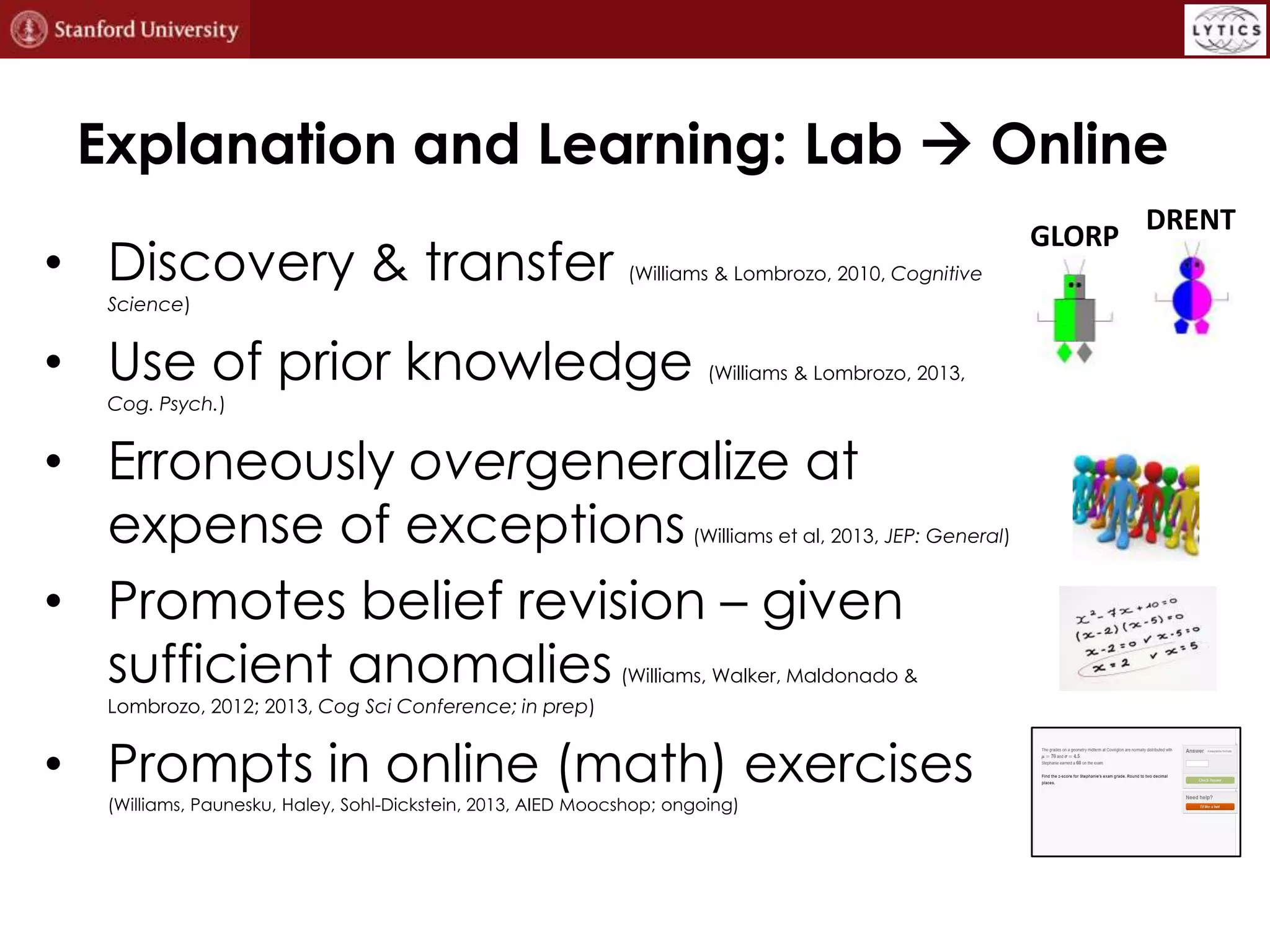1) Joseph Jay Williams conducts research using experiments and cognitive science to improve the design of online learning resources.
2) His work focuses on explaining concepts, teaching learning strategies, adding motivational messages, developing experimental paradigms, and designing experiments into online courses.
3) Some findings include that explaining "why" helps learning more than simply stating facts, teaching self-questioning strategies like "What? Why? How?" improves understanding, and embedding growth mindset messages increases student motivation more than positive messages alone.











![Experimentally manipulate additional prompts
Clickable link. + Prompts embedded into hints
[Click here to learn about the “What? Why? How?” strategy]](https://image.slidesharecdn.com/hcibrownbagv4smrefsnodata-131120154214-phpapp02/75/Using-Experiments-and-Cognitive-Science-Research-to-Improve-the-Design-of-Online-Resources-for-Learning-12-2048.jpg)



















